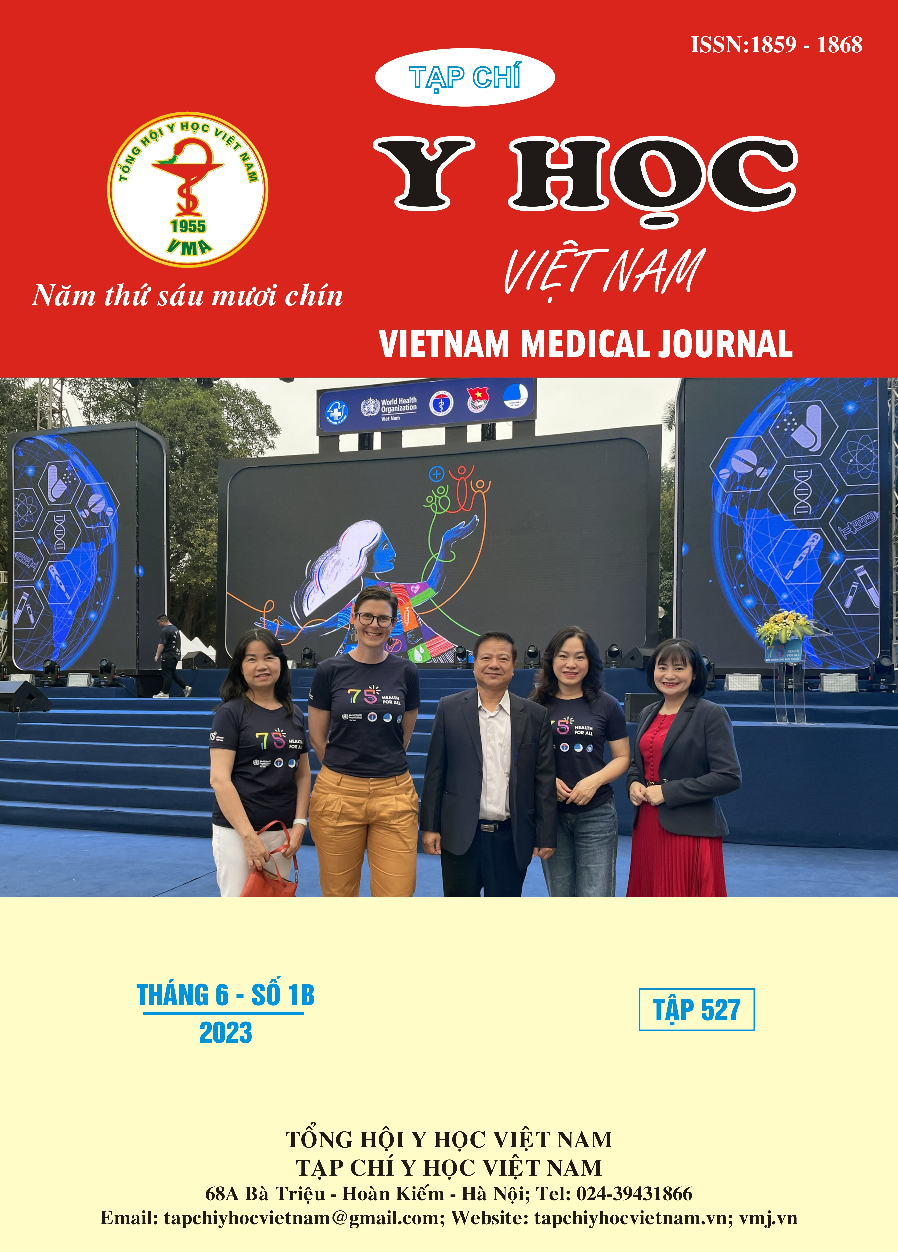DEVELOPMENT OF A STANDARDIZED EXTRACTION PROCEDURE TO CONTROL CURCUMINOID CONTENT FROM THE TURMERIC (RHIZOMA CURCUMA LONGA)
Main Article Content
Abstract
Background: Curcuminoid, the main compound that gives turmeric its yellow color and biological activity, has many medical applications. This study focused on investigating the process of extracting curcuminoids from turmeric rhizomes with a low-toxic, environment-friendly solvent and creating a highly standardized extract with controlled curcuminoid content. This could be a promising direction for a potential pharmaceutical industry approach to creating products that protect human health. Objectives: Develop a standardized and controlled extraction process of 100 grams of curcuminoid from turmeric rhizomes. Materials and methods: Raw yellow turmeric rhizomes were collected in U Minh Thuong district, Kien Giang province. They were then dried, pounded into powder, and kept to meet the requirements for testing medicinal herbs following Vietnam Pharmacopoeia standards before usage. The sample was first alkalized, then filtered to collect the solution, and finally acidified to a pH level that would precipitate curcuminoid. A highly standardized extract of turmeric with controlled curcuminoid content was determined by high-performance liquid chromatography coupled with a photodiode array detector (HPLC/PDA). Results: The extraction conditions were obtained, included the following: NaOH, pH = 13, tartaric acid, pH acidification of alkaline solution = 3, precipitation time was 4 hours. From 2 Kg of turmeric powder meeting the Vietnam Pharmacopoeia standards, 100 grams of turmeric standardized extract containing 27.5% curcuminoid was obtained. Conclusion: The study successfully developed a highly standardized extraction process with controlled curcuminoid content from the scale of 2 Kg of yellow turmeric and can be performed on a pilot scale.
Article Details
Keywords
standardized extract, turmeric rhizome, curcuminoid.
References
2. Ahmad R.S., et al. (2020), “Biochemistry, safety, pharmacological activities, and clinical applications of turmeric: a mechanistic review”, Evid Based Complement Alternat Med, 2020:7656919.
3. Fu Y.S., et al. (2021), “Pharmacological properties and underlying mechanisms of curcumin and prospects in medicinal potential”, Biomed Pharmacother, 141:111888.
4. Kharat M., Du Z., Zhang G., McClements D.J. (2017), “Physical and chemical stability of curcumin in aqueous solutions and emulsions: impact of pH, temperature, and molecular environment”, J Agric Food Chem, 65(8), pp. 1525-1532.
5. Le H.T., Fauster T., Haas K., Jaeger H. (2022), “Aqueous extraction of curcuminoids from Curcuma longa: effect of cell disintegration pre-treatment and extraction condition”, Food Bioproc Tech, 15(6), pp. 1359-1373.
6. Patil S.S., Pathak A., Rathod V.K. (2021), “Optimization and kinetic study of ultrasound assisted deep eutectic solvent based extraction: a greener route for extraction of curcuminoids from Curcuma longa”, Ultrason Sonochem, 70:105267.
7. Ruesgas-Ramón M., Figueroa-Espinoza M.C., Durand E. (2017), “Application of deep eutectic solvents (DES) for phenolic compounds extraction: overview, challenges, and opportunities”, J Agric Food Chem, 65(18), pp. 3591-3601.
8. Singh K., et al. (2022), “Impact of green extraction on curcuminoid content, antioxidant activities and anti-cancer efficiency (in vitro) from turmeric rhizomes (Curcuma longa L.)”, Foods, 11(22):3633.


